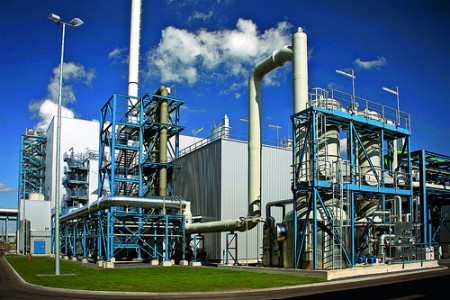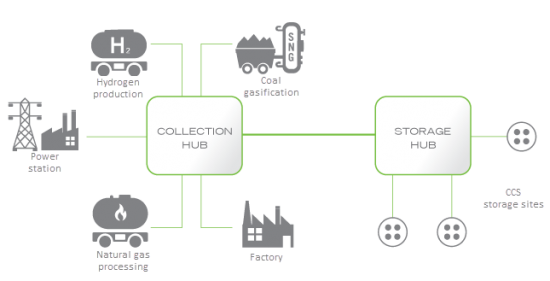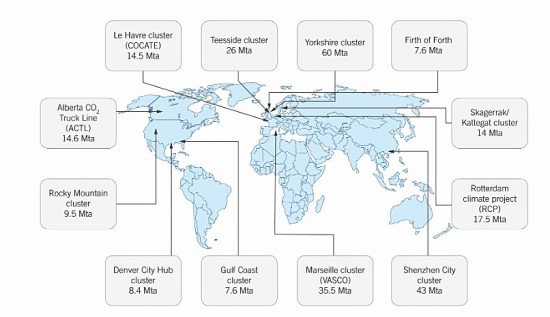July 3, 2016 – The limited number of operational carbon capture and sequestration (CCS) projects around the world are standalone sites. These facilities are added to coal-fired power or petro-chemical plants because they are large carbon emitters that justify the hundreds of millions of dollars in investment. Sites are picked based on two physical criteria. There must be an adequate source of capturable emissions and there must be a place in close proximity in witch to store or use the emissions. Sequestering or storing the carbon means burying it typically in shale or sandstone rock formations with a hard overriding layers of impervious rock to ensure the emissions do not leak out. Reusing the carbon can take several paths. In some cases the carbon dioxide (CO2) is liquefied and pumped into old oil wells to increase their yields. In other cases the CO2 can be bound into manufactured products such as concrete where it becomes permanently fixed.
But the singular limitation of these carbon capture solutions is they don’t capture carbon dioxide from the vast number of smaller emission sites, industrial applications that produce CO2 in quantity sufficient to warrant concern. That’s why a new report produced by the Global CCS Institute recommends the development of “hub and cluster” networks, similar to the one appearing in the illustration below, to capture and CO2 from multiple emitters. These would be built in areas where there are high concentrations of emitting industries and nearby capacity to store those emissions. The overall cost of such facilities would be far less than individual standalone CCS projects.
The rationale for CCS hub and clusters is that iron, steel, cement and chemical plants produce almost as much CO2 as the energy sector. The following map that appears in the aforementioned report identifies existing industrial cluster locations with their estimated annual CO2 emissions.
A CCS hub could be developed around an anchor site, a large emitter, with smaller emitters adding to the total amount of captured CO2. The additional contributions by other emitters would reduce the overall costs for the anchoring sponsor which normally would have to bear the entire project costs. This would make CCS implementation far more cost effective. It would also mean that the deployment would capture far more CO2 than the standalone strategy currently employed.
The entire CCS process from capture at the emission source to pipeline and shipping to geological storage would yield far more CO2 while lowering the cost of deploying the technology by as much as 50% according to the report estimates. For governments that have been active investors in CCS projects to date, the sharing of cost over a large number of smaller emitters would be a more effective use of funds. Government could use less of its money on the builds and put more into researching added geological storage capacity and uses for the captured CO2.
For industries like steel, cement and chemicals, an investment in a shared CCS cluster provides cost protection against rising carbon taxes. Hence a carbon tax would prove to be an incentive to rapid development of these types of facilities.
To make CCS hub and clusters a reality the report makes the following recommendations:
- identifying sites for CCS hubs globally.
- policy support for development and pre-investment in a CO2 transport and storage infrastructure.
- incentives for development of CCS in industrial sectors where CO2 emission reduction opportunities are limited.
- a review of legal and regulatory barriers that would inhibit development of CCS hubs including those serving across national boundaries.
- engagement with industry and communities in identified sites to ensure buy in.
To date the failure of wider adoption of CCS globally comes down to the high cost of standalone development and the reluctance of industry to bear the cost based on the lack of a comprehensive carbon policy in most national jurisdictions. Hub and cluster can answer one of these challenges but without a carbon tax and government assistance CCS will remain a poorly executed strategy in our current effort to combat carbon emissions and climate change.

















